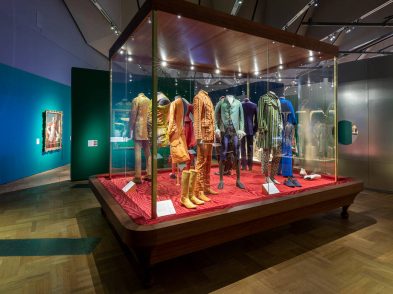Fancy those reddish tiles on roofs that make Italian towns and villages so picturesque? Or those elegant orange and lemon vases which dot their Renaissance gardens? Both of these essential Italian elements are made of cotto, a type of traditional brick tile, which in Tuscany is practically synonymous with Impruneta.
A must for Chianti lovers, the town of Impruneta holds a basilica, built atop an Etruscan site, and beloved by the Medici family as a pilgrimage stop; contemporary “pilgrims”, on the other hand, still move through the area due to its position along the road to the Florence American Cemetery and Memorial. But most importantly, Impruneta’s “soil morphology is unique in the world—rich in iron and copper, among other minerals,” says Angelo Mariani, owner of Antica Fornace Mariani. “That’s why our terracotta is frost resistant: it is porous, it breathes. And it is beautiful with that unmistakable warm color: the Della Robbia brothers used it in their masterpieces and may have had a furnace here.”
Ph. via Antica Fornace Mariani
Terracotta furnaces and olive oil mills have been the pride and joy of Impruneta for centuries. Today, the Mariani family is proud to be carrying on the mestiere as one of just four surviving furnaces (where there were once 20). “In the 19th century, Anselmo Mariani founded our company, right in his brickyard in Ferrone,” explains Anselmo’s grandson Franco. ”Then, from the building materials, his sons Angelo and Armeno started the artistic manufacture and reproductions: sculptures, basins, vases, jars, flowerpots…the {large flower pots} seen in via Tornabuoni come from here, as does the statue of the lovely girl on a fountain in the Rose Garden of piazzale Michelangelo.”
But then came the terracotta crisis: globalization of the market, no safeguarding of the “made in Impruneta” label, a shift in garden fashions and alternative materials to boot. “Luckily we broadened our horizons,” Franco’s brother Enrico said. “Our first export to the United States was in the ‘50s; in the ‘80s, there was great demand from Germany and France, Belgium and Holland. Actually, for that we have to thank William III d’Orange.”
Yes, the Mariani men could trace their 1980s work back to the royal “imprimatur”: they were commissioned to reproduce 300 vases originally found in Het Loo Palace, a 17th century hunting residence built for William III and Mary II of England.
“We were asked to remodel an original decorative vase from the 17th century,“ Luigi Mariani explained. That project helped earn the brothers a similar commission for the Privy Garden of Hampton Court, built at the behest of Henry VIII in 1530.
This Renaissance garden was converted to the Baroque style between 1660 and 1702, but a 1986 fire in the apartments overlooking it prompted restoration of the building and its surroundings. The English Heritage Trust then suggested the incorporation of garden basins reproduced from the original William D’Orange ones. Enter Antica Fornace Mariani: the terracotta wizards were up for the job and made quite a splash with the project.
As they await potential future requests from Windsor, Angelo Mariani and sons turn their focus from flower pots to wine—a presentation of their orci (wine barrels) will take place during the local Festa del Vino on September 17—and to music. “We just started a collaboration with B&C Speakers, producers of acoustic cases in Tuscany {Bagno a Ripoli} with distribution in the United States and Brazil,” Enrico says. “Believe it or not, terracotta elements give special effects to sound.”
Believe it. Especially where creative Tuscan entrepreneurship like this is concerned.









